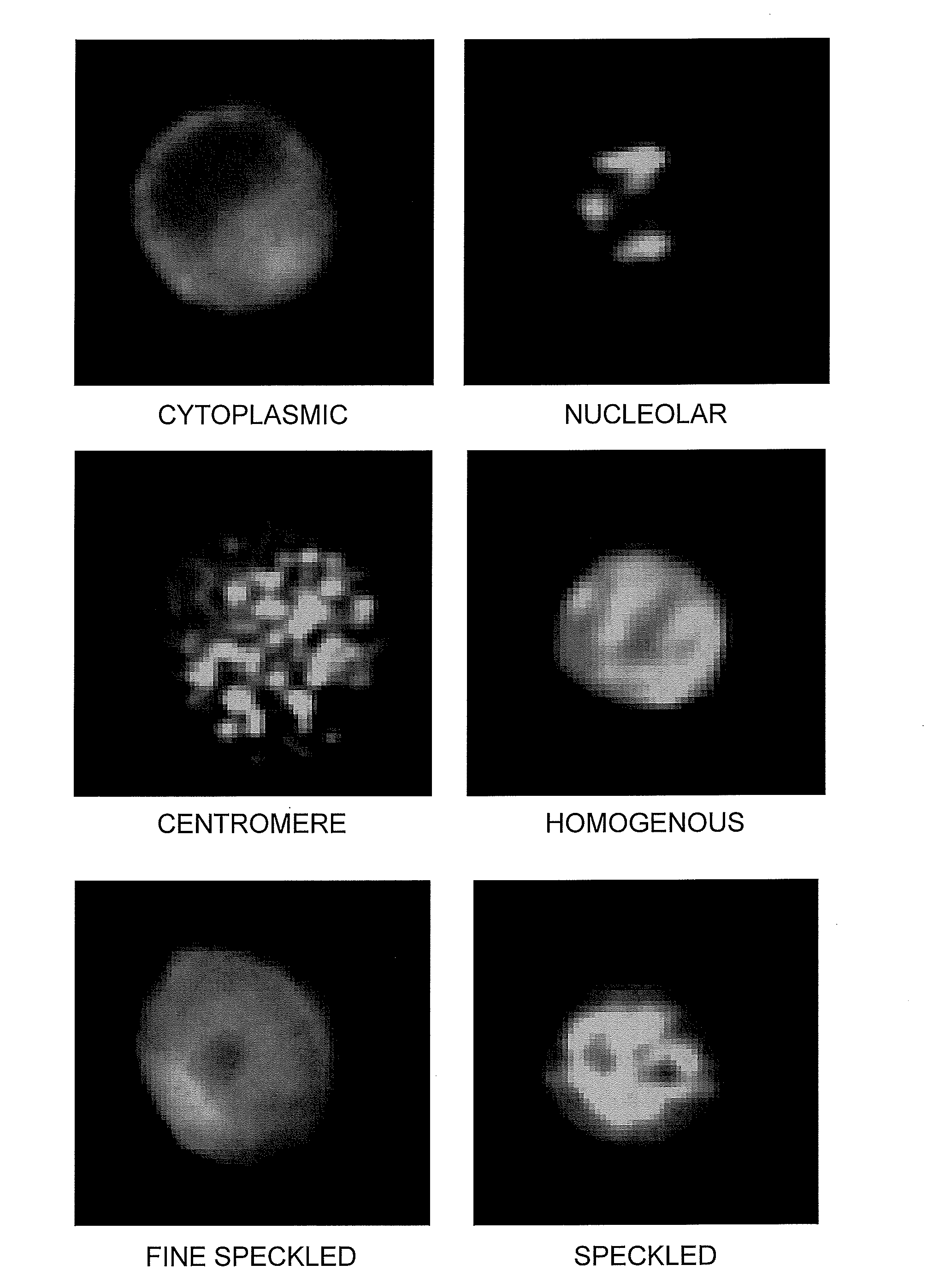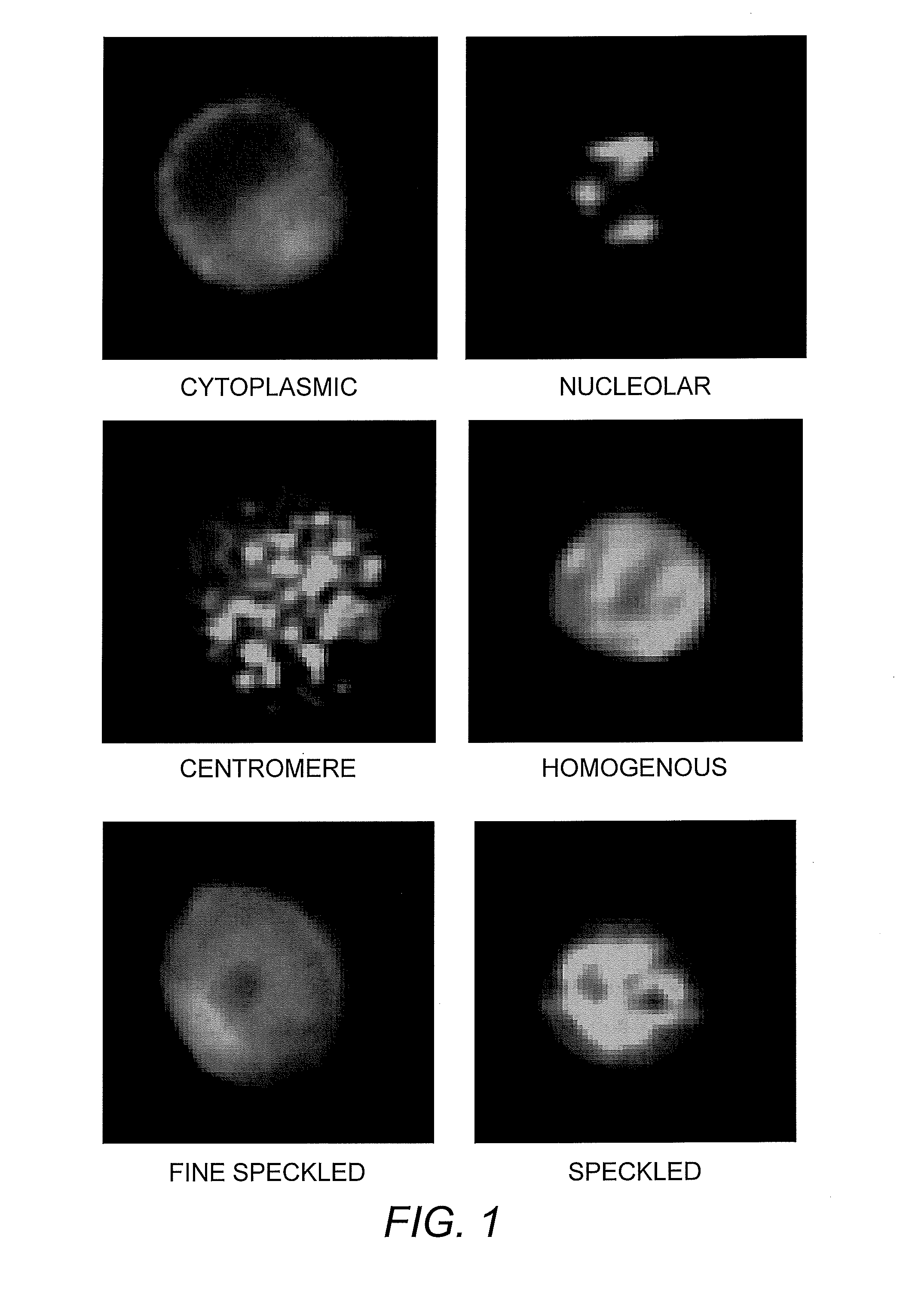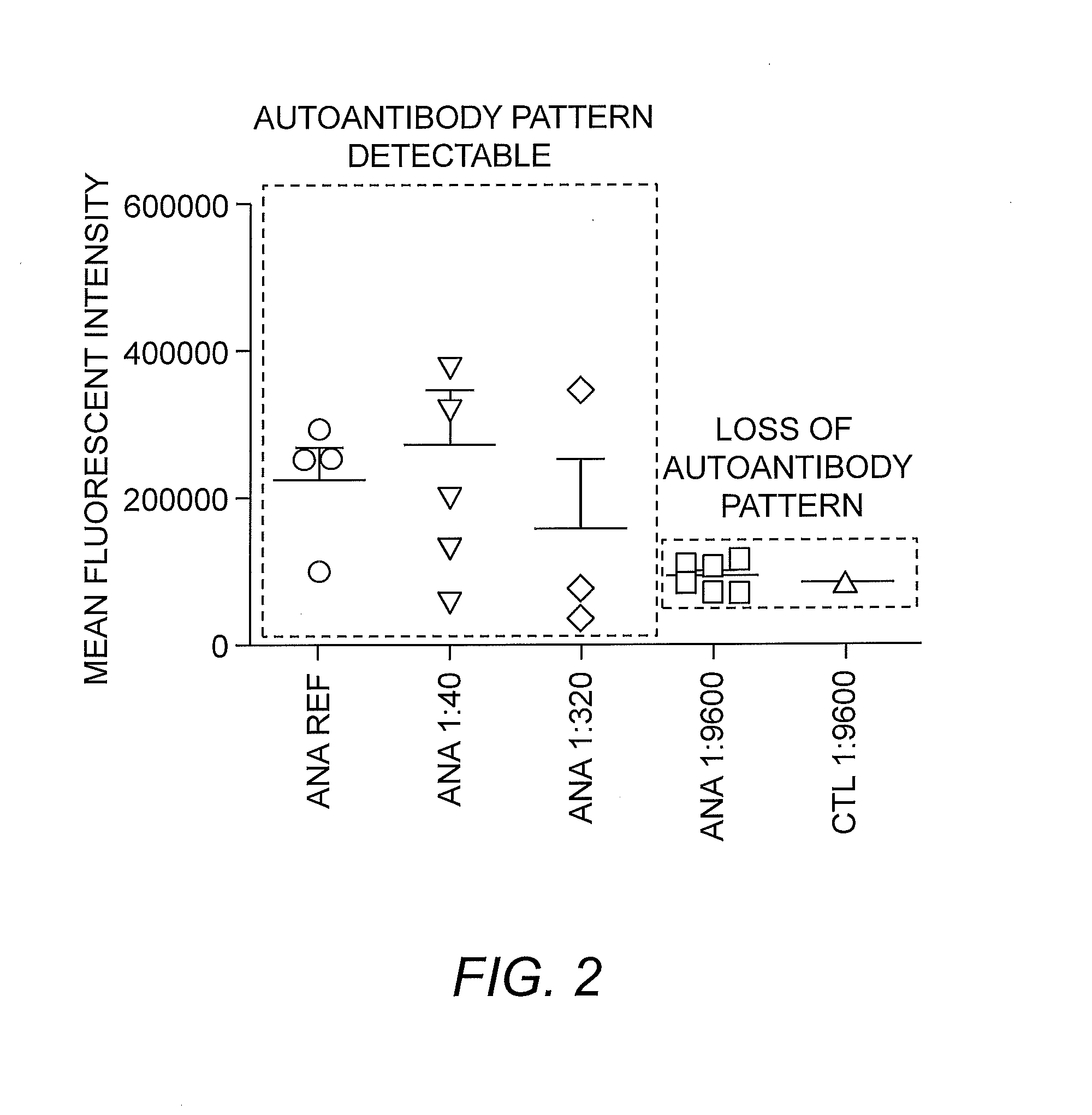Method for Automated Autoantibody Detection and Identification
a technology of autoantibody detection and identification, applied in the direction of fluorescence/phosphorescence, instruments, material analysis, etc., can solve the problems of large amount of autoantibody production, limited number of known autoantibodies, and malfunction of the immune system of the body
- Summary
- Abstract
- Description
- Claims
- Application Information
AI Technical Summary
Benefits of technology
Problems solved by technology
Method used
Image
Examples
example 1
ANA Protocol
[0038]Patient samples are prepared at an appropriate dilution in phosphate buffered sample (PBS; e.g., 10 μL of sample plus 390 μL of PBS). Subsequently, the patient sample is incubated with a fixed and permeabilized suspension of HEp-2 cells. After an appropriate amount of time for the autoantibodies to bind autoantigens, the HEp-2 cells are incubated with fluorescent markers for cellular compartments and multiple serial dilutions can be prepared to determine titer. Generally, titers of 1:40 or less (e.g., in the range of 1:40 to 1:320) are particularly useful, and, as shown in FIG. 2, provide a sufficient level of intensity for autoantibody pattern detection.
[0039]HEp-2 cells are subsequently incubated with fluorescent anti-IgG secondary antibody and localization of autoantibodies to cell compartments is carried out with imaging flow cytometry. Cellular images are captured and analyzed with pre-defined templates and software algorithms. A statistical report indicates p...
example 2
Classification of Patterns
[0040]Various patterns of autoantibody binding and the basis thereof are as follow:
Nuclear Patterns
[0041]1. Homogeneous. A homogeneous or diffuse staining pattern of the nucleus is consistent with autoantibodies to native DNA (nDNA) histones and / or deoxyribonucleoprotein (DNP) (Lachman & Kunkel (1961) Lancet 2:436; Friou (1964) Arthritis Rheum. 7:161).
[0042]2. Speckled Patterns. A speckled pattern is the most commonly observed ANA pattern and can be distinguished from a homogenous pattern by, e.g., dark spot areas or areas of increased contrast. A uniform, true speckled pattern may be seen with centromere antibodies in cells not in division. A clumpy speckled patterns may be seen with antibodies to n-RNP, Sm, and SSB / La.[0043]i. Fine speckled pattern, chromosome-negative: Numerous small uniform points of fluorescence uniformly scattered throughout the nucleus. The nucleoli generally appear unstained. The mitotic cells may demonstrate a few speckles in their...
PUM
| Property | Measurement | Unit |
|---|---|---|
| wavelength | aaaaa | aaaaa |
| wavelength | aaaaa | aaaaa |
| wavelength | aaaaa | aaaaa |
Abstract
Description
Claims
Application Information
 Login to View More
Login to View More - R&D
- Intellectual Property
- Life Sciences
- Materials
- Tech Scout
- Unparalleled Data Quality
- Higher Quality Content
- 60% Fewer Hallucinations
Browse by: Latest US Patents, China's latest patents, Technical Efficacy Thesaurus, Application Domain, Technology Topic, Popular Technical Reports.
© 2025 PatSnap. All rights reserved.Legal|Privacy policy|Modern Slavery Act Transparency Statement|Sitemap|About US| Contact US: help@patsnap.com



